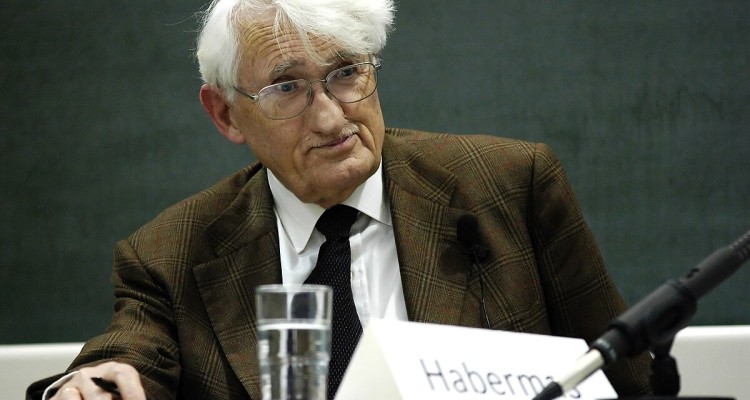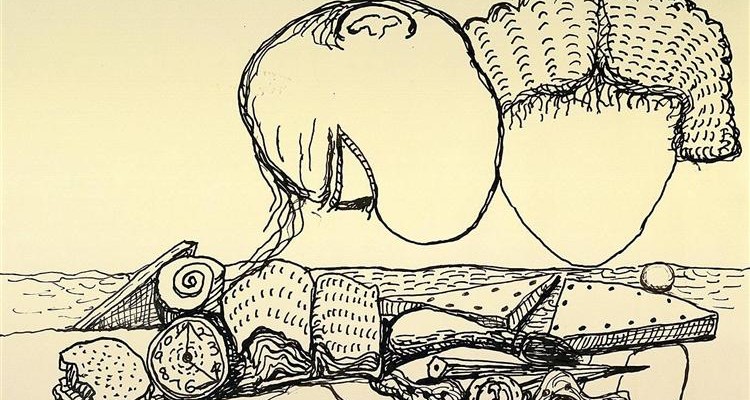What does it mean to live with the Nazi past? Katharina Volckmer, a young German writer living in London, seeks to answer the question by taking it from the material side of things: what does it mean to live in an urban landscape littered with Hitler’s dreams of grandeur turned to stone? Suspecting that the Germans care about the monuments of Nazism because they reflect a promise of greatness that unconsciously serves as a consolation to the perpetrators, she reminds us that Nazism was utterly abject. That no monuments to Hitler’s wet fantasies should be maintained; that no one needs them to remember German crimes. They only serve to make life in Germany unbearable for those who see their true purpose: to allow Germans to say to themselves that, after all, “it looked good”. Tour of the places of grandiose abjectness serving as a backstage to the daily life of the Germans.

Nazism was a failure. Despite, or rather because of the unspeakable crimes committed in the name of this ideology, it is important to remember that the inner structures of the German dictatorship did not hold. That the vision of a Reich that would last a thousand years was as ridiculous as it was perverse – a dream based on violence and fear. It’s part of an insight that remains painful for victims and their descendants as well as for the perpetrators and those mourning the lives lost by Germans fighting for this empty ideology. The insight that was at the heart of the discomfort caused by Hannah Arendt’s book Eichmann in Jerusalem: the fact that real life villains are not geniuses with complicated childhoods but that they are banal and ordinary. That it was precisely this banality that made it so easy for so many people to participate, that made it so dangerous. That the men who committed those crimes against humanity were people like Heinrich Himmler, a chicken farmer who struggled to string a sentence together. People who allegedly left the judges at the Nuremberg trials in 1945/46 finding it hard to believe that these were really some of the men responsible for the planning and execution of mass murder on a hitherto unseen industrial scale.
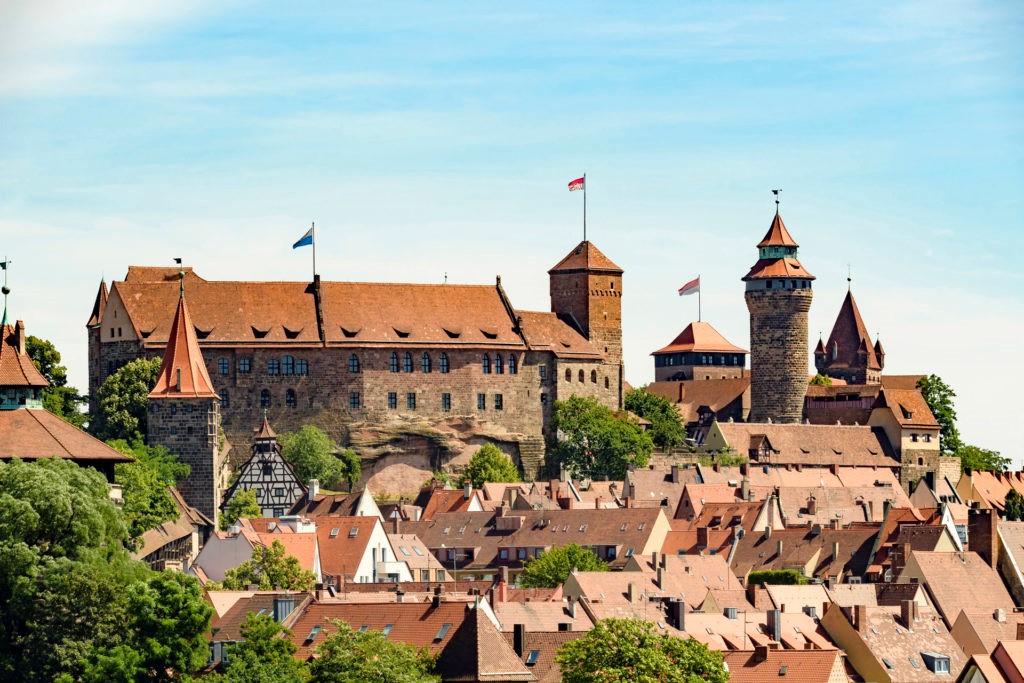
There is hardly a better example of the discrepancy between the nazi sense of self and reality than Hitler’s personal Nazi Wonderland: Nuremberg, the city he loved more than any other. Home to the Nazi party rally grounds which were mostly designed by the Germans’ favourite Nazi, Albert Speer, and take up around eleven square kilometres in the southeast of the city. It is here that the Nazi Congresses took place, immortalised in Leni Riefenstahl’s most famous film, Triumph of the Will. It was here that on September 15, 1935 at a special meeting of the Reichstag taking place during the Nuremberg rally that the Nuremberg Laws were enacted – laws for the protection of German blood and German honour, forbidding marriage and extramarital relations between Germans and Jews (not long after Black and Romani people were also added to the list of ‘enemies of the race-based state’). Yet nothing else ever really came out of these ‘congresses’ and it’s no surprise that, with a few exceptions, most of the monumental architecture designed for the sole purpose of propaganda and intimidation, was never finished. The Great Road is a parade road that was never used, the German stadium which was meant to be the biggest stadium in the world never saw more than its foundations and the Congress Hall that was inspired by the colosseum in Rome to provide 50,000 seats was never finished and remains without a roof. A playground for mass events that carried no inherent meaning other than to demonstrate unity and make other people feel afraid (a nazi tactic that we can still see in the torchlight marches taking place in Germany today) and that was in the end revealed to be an unfeasible ambition.
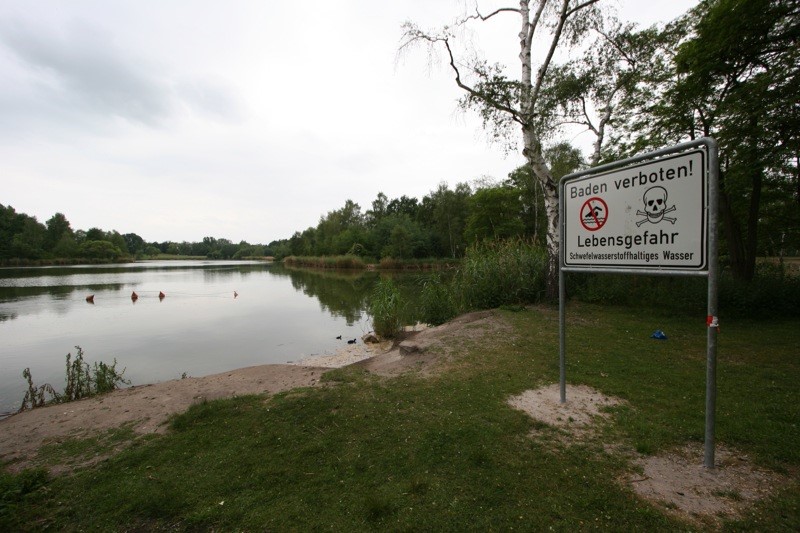
Recently, the Congress Hall in particular was in the news again because the city of Nuremberg decided that during a lengthy period of several years of much needed renovation works, the Nuremberg Opera would be temporarily housed here. Built with material from forced labour sites, it’s the most famous surviving example of Nazi megalomaniac architecture. To anyone who is not German, this might sound shocking, possibly unbelievable or in bad taste whilst actually it is a daily reality for life in modern day Germany. The Nuremberg Symphony Orchestra has been based in the Southern Wing of the Congress Hall since 1962 and over the years the city of Nuremberg has contemplated various other projects: turning it into a football stadium (too expensive), or a shopping mall before in 2001 a part of it became the ‘Documentation Centre of the Nazi Party Rally Grounds.’ Today parts of the area around it are used for parking, as storage space and a venue for music festivals. Between the Congress Hall and the Great Road the biannual ‘Volksfest’ (fun fair) takes place. But if it is any consolation, the American army removed the big swastikas from the grandstand on the Zeppelin Field, the Nazis’ field of dreams where the big rallies took place, before using it as a leisure area for their soldiers and their families. And in 2016, the German state together with the state of Bavaria pledged a sum of 85.1 million Euros for the renovation of the grandstand and surroundings areas as they had fallen into disrepair. Needless to say, that all the remaining buildings on the former Nazi party rally grounds, including the Congress Hall, are listed, preserved as sites of historical interest.
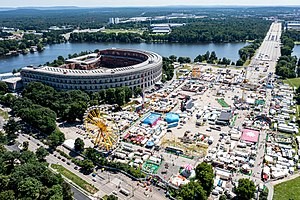
But what exactly are we looking to preserve here? If you train your eyes just a little bit, then you will be able to see a lot of the surviving nazi architecture in Germany today – buildings of the everyday where the missing swastikas are still visible, but also buildings such as the current Federal Ministry of Finance in Berlin, the Haus der Kunst in Munich or the State Theatre Saarbrücken. From very early on, Albert Speer as the main architect of the Third Reich, the man who, amongst many crimes he committed, decided that the barracks in Auschwitz-Birkenau did not need proper flooring, making it even less likely for people to survive the winters there. A potent reminder of the moral aspects of architecture, of the stories these buildings have to tell. And yet, the German state keeps showing a clear tendency to preserve this kind of monumental architecture and to get rid of other buildings, in particular those from the former GDR. The reason that is usually given is that Nazis built more solidly than Socialists – the most famous recent example being the Palace of the Republic in Berlin (the seat of the Parliament of the German Democratic Republic) which was demolished because if asbestos. In its stead it was decided to rebuild the Berlin Palace (the main residence of the House of Hohenzollern from 1443 to 1918) with one modern façade and a modern interior called the Humboldtforum. A museum to house ‘non-European’ art, i.e., colonial artefacts. A plot that would seem unreasonable in a novel. But there are other examples. When a member of the Jewish community in Wittenberg went to court to ask for the removal of an anti-Semitic sculpture, a ‘Judensau’ (image of Jews in obscene contact with a large sow), from the 13th century to be removed from the outside of a church (there are several other examples of such sculptures to be found), but his claim was dismissed because we are dealing with a historical monument. There are even cases of churches trying to get rid of these sculptures but the laws surrounding listed buildings do not allow for it. Yet in 2015 during the first wave of refugees, politicians did not shy away from suggesting that some of these asylum seekers could be housed in an ex-outpost in barracks, which once served as a satellite camp for Buchenwald. The authorities tried to justify this idea by pointing out that the building in question had never housed forced laborers (but perpetrators).
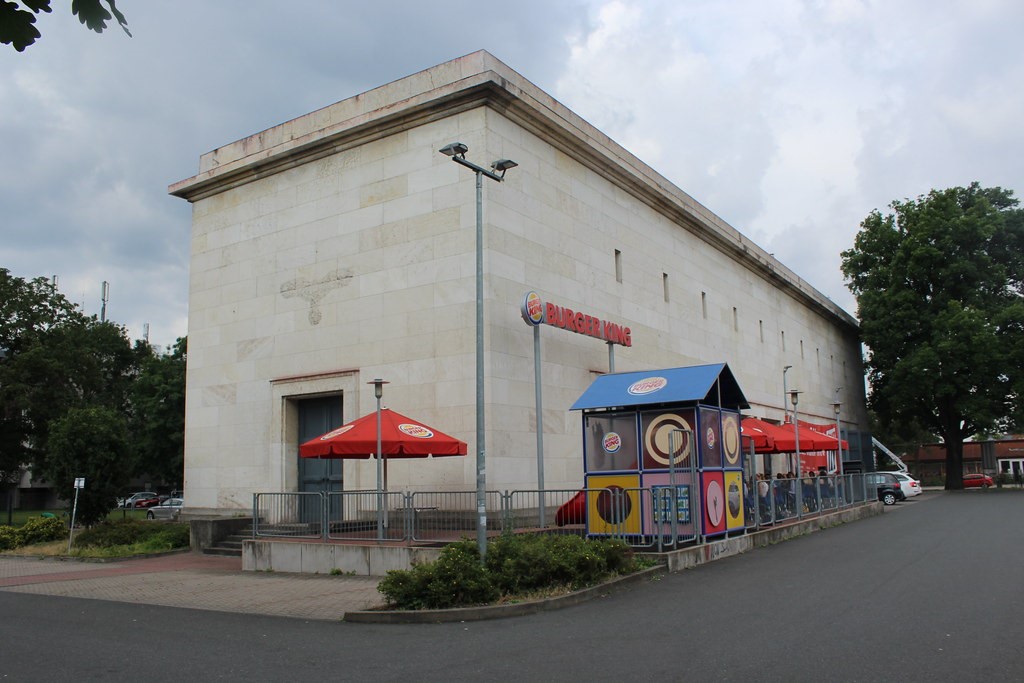
On the 5th of January this year, four young people accused of criminal damage in connection with the removal of the statue of Edward Colston during the Black Lives Matter protests in Bristol in June 2020, were acquitted. Colston was heavily involved in the slave trade and the toppling of the statue caused huge debates over what and how we remember our histories. Who gets to tell these stories and what we need to do in order to remember the crimes we have committed and how to deal with the continuities of our past. I never doubted that the removal of this statue was just because I was sure that not a single individual will have walked past it and felt prompted to engage with the history of slavery and how it is still having an impact on people’s lives today. As a German, I kept thinking to myself that I don’t need a statue of Hitler to remember the Holocaust. A statue of Hitler would do nothing to contribute to the dignity and memory of those who were killed and suffered under the regime. And yet if you walk through Germany with open eyes, this is what you will see: nazism still smiling from many corners. Nazism protected as a listed monument, as something we need to preserve. In this instance, the Congress Hall in Nuremberg looming eerily, always containing the possibility that one day it might be completed. And even though there is no blanket policy for how best to proceed with this architectural heritage, it is high time to re-think how and why we preserve buildings and to remember that architecture always embodies the ideology of its creator. I would love for people to use the same collective energy with which they started to tear down the Berlin Wall, to start demolishing some of these horrors from our nazi past. And why not start with the Congress Hall in Nuremberg? We don’t need these buildings to keep the memories of those we have harmed alive. We should have stolpersteine and memorial sites for victims and survivors, we should try everything we can to undo the fascism we are faced with today, but we should not continue to pay tribute to Hitler’s wet fantasies. To nazism’s absurd visions and the feelings of fear they still instil in us. And until then it will be difficult to breathe in that country, until then an opera performed at such a venue will never be free. An art form that is so tainted in the context of our history will never be able to overcome such a background and so we need a much more radical step if we want to be able to see clearly. To see our history for what it really was. That’s why it’s time for these stones to finally come down.
Katharina Volckmer
Katharina Volckmer was born in Germany in 1987. She lives in London, where she works for a literary agency. “The appointment” is her first novel, published in many countries.
